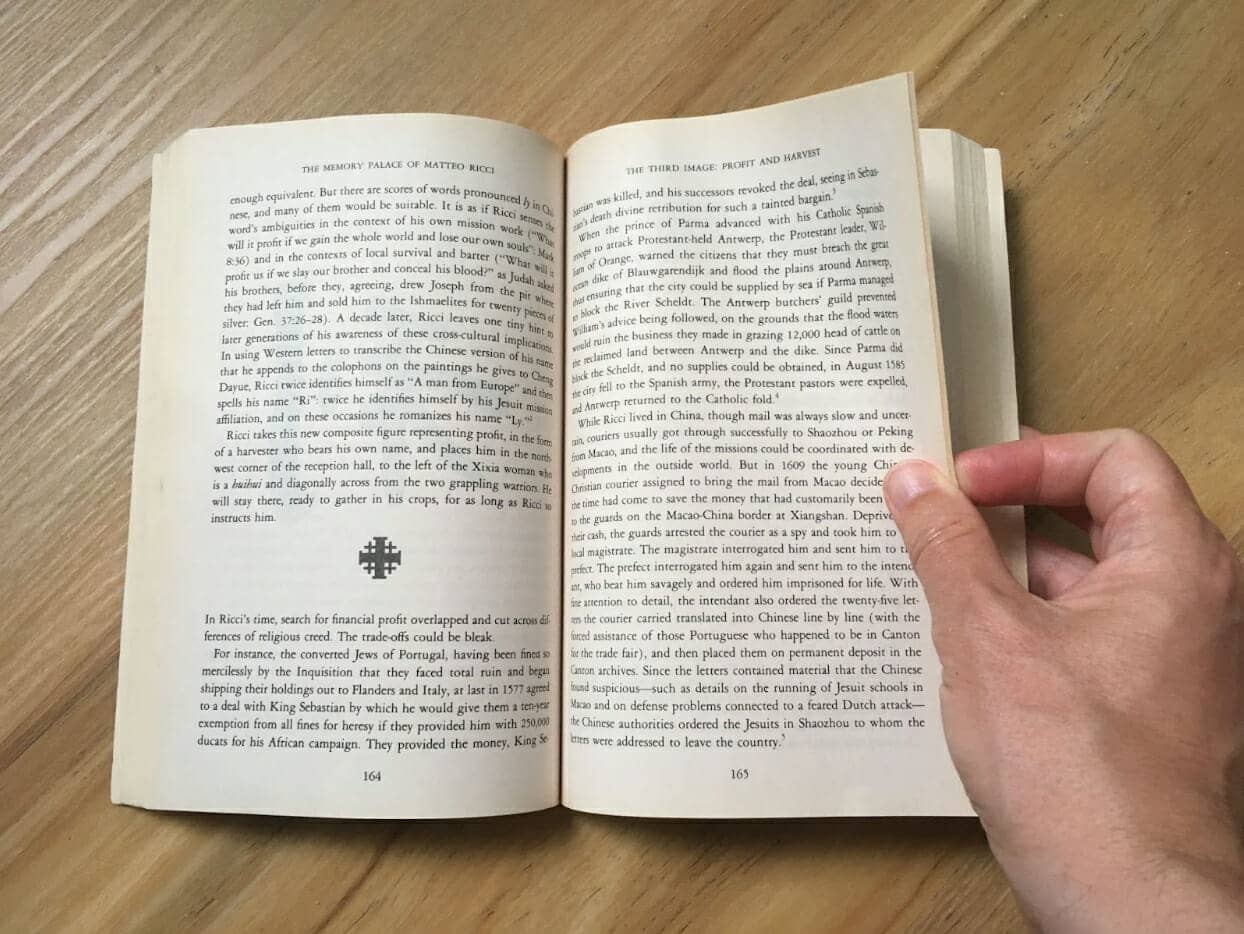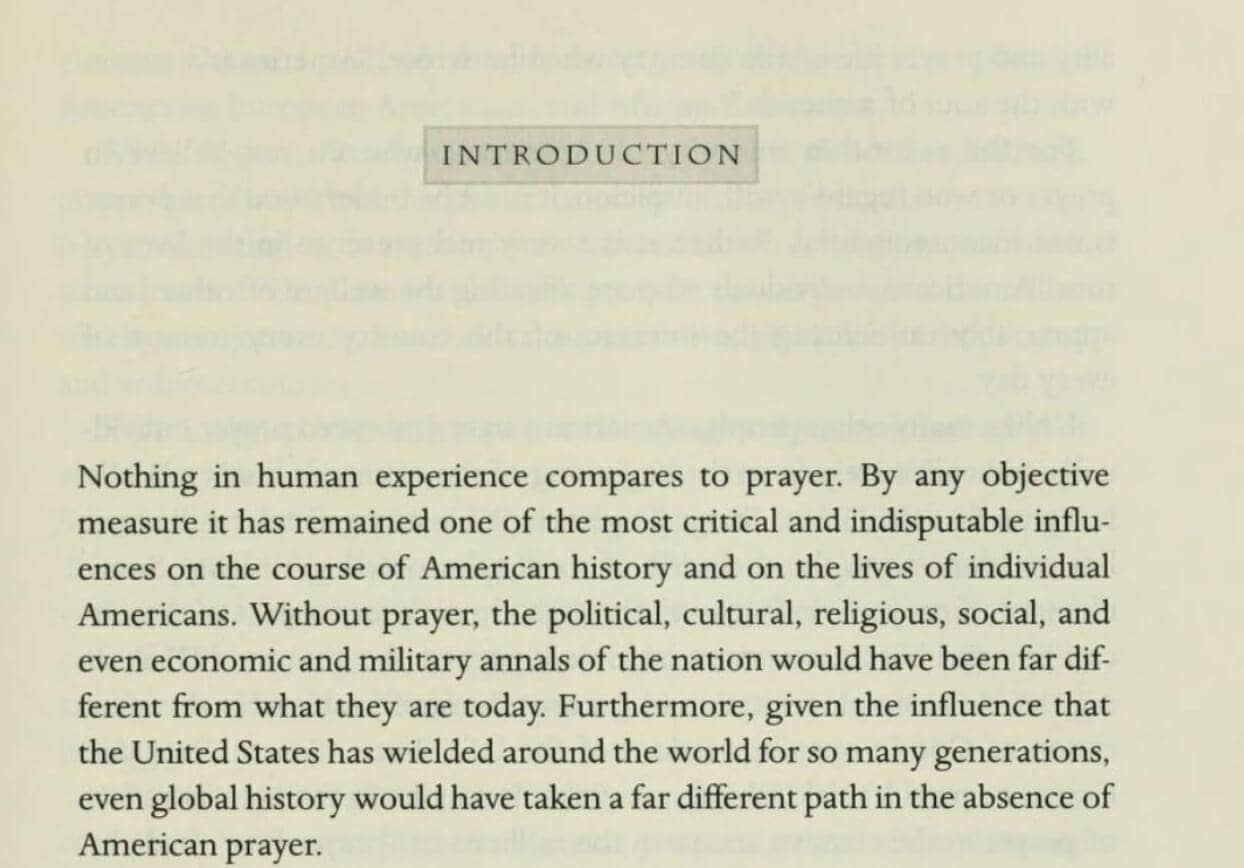Podcast: Download
Subscribe: Apple Podcasts | RSS
 If you can’t focus on reading, here’s why you should feel hopeful that you can increase your attention quickly.
If you can’t focus on reading, here’s why you should feel hopeful that you can increase your attention quickly.
See, I nearly dropped out of grad school in 2003 because I could barely focus on a sentence.
My looming exams made the stress even worse, leading to a vicious cycle that degraded my concentration further.
But I knew that I just had to solve the problem!
Failure simply wasn’t an option.
Although I didn’t discover all that I’m about to share with you overnight, one concentration tip in particular made all the difference in the world.
I was able to stay in school. Get my PhD. Get a major research grant and travel the world.
All because of the information you’ll read on this page.
But be warned:
A lot of what I have to share puts a different spin on some of the reading comprehension and focus techniques you’ve encountered before.
So if you’re ready to discover how to stay focused while reading from someone who reads a ton and turns the information into knowledge for others each and every day, let’s get started!
How to Focus on Reading: The 15 Things You Need to Do
As you go through this list, it’s important to understand that there’s no special order here.
Each and every tip is equally useful.
But you don’t have to put them all into use overnight.
And some of them are useful for only certain kinds of books.
Frankly, there is no one-size-fits-all or cookie-cutter method for reading with greater focus.
So if you can’t focus on reading, you’re going to love how easy it is to improve.
One: Read More, More Often
The simplest way to improve your focus is to simply read more and read more often.
Read as many different types of information as you can from many different types of authors.
This tactic is incredibly important because one big reason people struggle to focus while reading comes down to weak reading muscles.
Let’s face it:
Humans were not born to read. Evolution has yet to imprint the alphabet directly into our DNA.
Reading is a skill we have to learn.
And once we have the basics down, we have to keep the mental muscles involved in reading strong.
Two: Be Patient With Authors
People who can’t focus often blame themselves. They think they might be lacking focus, when actually the author is not writing in a way that demands focus.
Worse, some readers may consider themselves less intelligent than they actually are. In reality, the book is not as well written as it could be.
For example, one of the students in the Magnetic Memory Method Masterclass came to me recently for help with his reading comprehension.
When I asked for an example of what my student was struggling with, he said he couldn’t concentrate on or remember anything from One Nation Under God by James Moore.
This book, which is about the history of prayer in America, is well-written in terms of clean prose.
But the prose is not particularly clear. And it is logically inconsistent. No wonder my student couldn’t remember anything he was reading.
To take one example, just examine the opening paragraph. It will help you understand my next tip, keeping in mind that we’re going to extend Moore our patience with his writing.
Three: Bring The Engagement
Moore says in this book that “nothing in human experience compares to prayer.”
A sentence like this is hard to comprehend for a few reasons. First, what does the author mean by prayer, and human experience? And what exactly does the word “compare” mean in this context?
In reality, prayer compares to all kinds of things, such as confession with a priest and the secular equivalent of talking to a psychoanalyst. Using mantras compares to prayer as does wishful thinking and other forms of self-talk.
Then the author uses an empty, cliche phrase like, “by any objective measure.” But nowhere does the author list a single objective measure. This absence means that the reader has nothing to latch onto.
In fact, it’s not until page three of the book that Moore provides his reader with a concrete example to experience (something very important to have during any learning cycle). The buried image Moore finally gives involves an actual event: A number of people getting together in Yankee Stadium to pray after the 9/11 attacks on the World Trade Center.
As I explained to my student, the problem isn’t with the focus skills my student was bringing to the table. It’s with the fact that the author writes in vague abstractions. The book would have been a lot better with an introduction like this:
Imagine that you’re in Yankee Stadium with a group of people gathered in prayer. Your heart is flooded with conflicting emotions, ranging from anger, rage, the need for revenge and feelings of patriotism for your country. Prayer helps you navigate these tough emotions, and that is just one reason why prayer holds so much value compared to some of the other ways you could deal with the range of confusing feelings you might experience after such a tragic event as 9/11.
This voluntary re-writing of the text brings the engagement.
But I had to do that as the reader of this book for the author through a kind of real-time translation. I changed the boring and the vague into the concrete and specific. Now, I know this might be easier for me because I have lots of practice in reading multiple kinds of literature daily. I’ve also written lots of books.
Still, in order to maintain focus on confusing writing, this kind of translation is what has helped me the most. And it’s what I suggest you do as a reader when books fail to stimulate you or harness your attention.
Read what the author says. And then translate it into something much more engaging.
Here’s another tactic that can help you do that.
Four: Interrogate Your Reading with Suspicion (And Faith)
I’ve just talked about translating vague writing into specific ideas and concepts to make the process more active and interesting.
But there’s a sub-routine going on that deserves its own attention. It’s based on one of the favorite reading tactics I learned in university: the hermeneutics of suspicion.
Now, there’s a lot of political nonsense in that style of reading that I have completely abandoned. But the core idea is that you read with skepticism.
I’ve already demonstrated this by looking at the first sentence of One Nation Under God. This “interrogation” exposed that the author is being more than a little lazy with his wording and meaning.
And reading this way allowed me to dig deeper and think about what he really means once the generalizations are cleared away.
To do this, it’s important to balance the suspicious part with faith. I always read in the faith that the author has good intentions and wants to communicate key points.
This circles back to being patient with the author – which in the case of this book required a lot of patience.
Five: “Concept Walk” the Index
One of the reasons we lose focus comes from authors drowning us in references. This problem lessens the more you read because you’ll catch the references and have ready-to-go images and ideas in your mind.
But until that starts to happen for you, you’ll want to get in the habit of regularly checking the index.
For example, if an author mentions a philosopher, check the index and look at all the pages this person is mentioned on. If they seem like they’re going to be important, make time to read up about this individual.
That way, when you reach those passages again later, you won’t lose focus. You’ll have a cognitive map to help you make a connection.
Yes, this is kind of like interrupting yourself. But done well, this kind of self-distraction is like interleaving, a key strategy when you want to remember what you’re studying.
It’s the external distractions we need to worry about. There are a few key ways you can do that.
Six: Delete Distractions
There’s nothing worse than having external forces interrupt your reading.
Today, for example, I was at one of my favorite reading spots when it started to rain. Suddenly, a bunch of people were huddling with me under the umbrella over the picnic table!
No problem. I just left. I have nearly a dozen other places already charted out where I can read.
But how often do we try to push through distractions instead of turning them off?
There are many simple ways to eliminate distractions while you’re reading:
- Schedule your reading time
- Alert others that you’re not to be disturbed during this time
- Turn off the phone or all notifications if reading on a device
- Close all tabs (or open a new browser window and make it full screen)
- Take notes with pen and paper so you don’t have to close tabs or screens
- Use notes to look up things later if you prefer to keep your reading flow going
- Choose quiet places in low traffic areas
- Have a plan for where else you can go if something changes
- Have targets for how much you’re going to read
Let’s talk more about the idea of having targets and how they can help you focus.
Seven: Targets And The Pinch Technique
I read a ton each year. But it’s rarely random. I read more because I pick specific targets and fulfill them.
For example, when I’m interested in a particular topic, I’ll pick 3-5 books in that area and plan to have them read within 4-6 weeks. This is a huge strategy for people who want to read faster.
So that’s what I call a “Macro-Target.”
Then, there are “Micro-Targets,” literally figuring out how much I plan to read in a given day. Usually I try to cover three chapters, if not more.
Since all of our minds are fried from the Internet, specifically thanks to digital amnesia, I have found something strange. Chapters that used to seem very short now seem incredibly long. Even my attention span and focus have been shortened.
To combat this, I started to count the exact number of pages in a chapter and then pinch the entire chapter while I’m reading. That way, the feeling of making progress keeps me focused more than if I have to keep thinking about how many more pages are left in the chapter or section.

Sure, I know this sounds kind of silly.
But I’ve been doing it for years and it helps me maintain my focus a ton.
Eight: Take a Picture Walk
Barbara Oakley from Learning How to Learn talks about the picture walk technique in the book version of that world famous course.
Taking a picture walk is a bit like the Pinch Technique, but in this case, you’re going through each chapter in advance to note any pictures, charts or graphs.
By having a quick look for these, you’re priming your mind with something to look forward to. And you’re giving your mind clues about what the information in the chapter might be about.
What if the book doesn’t have any illustrations or diagrams?
Well, that’s useful to know in advance too. It helps you brace for impact from the walls of text so you can better focus your mind on the task to be done.
Nine: Timeless Pomodoro
One thing that I’ve never understood is the Pomodoro Technique. If you’re not familiar with the term, it’s a form of timeboxing where you set a timer and intend to focus on reading for a specific period of time.
The reason I don’t like this technique is simple:
You are asking to be distracted from your reading.
What I prefer to do is intend to read for, say 40 minutes, and then use the pinch technique.
Usually, I’ll get the chapter done and feel like 40 minutes has gone by, only to find that it’s more like 14 minutes.
Then I stand up, do a bit of stretching and read some more.
Using your mind to gauge and experiment with time will likely be much for fruitful for your focus than relegating time to machines in both the short and long term.
Ten: Read Out Of Order
One of the easiest ways to lose focus while reading is to insist on moving from the beginning to the end of books.
Except for novels, I rarely do this. It’s simply not helpful.
When reading non-fiction books, it’s often helpful to read the conclusion first. That way you get a summary of the key points and why the author thinks the thesis of the book was valuable and correct.
Of course, not all books have conclusions, but reading out of order is a generally valuable principle for increasing engagement.
Eleven: Mission Statements For Motivation
Often we lose focus because we forget why we’re reading in the first place.
For that reason, it’s useful to craft a vision statement, write it down and keep it somewhere you can see it.
This might seem silly, but many people use subconscious influence tactics like written reminders – including me.
At one point when writing my PhD dissertation got really difficult, I hand wrote and posted this message on my computer monitor:
None of us work nearly as hard as we think we do.
Every time I found myself slacking off, it was hard for me to ignore this message. So I opened one of the many research PDFs I needed to plow through and got back to reading.
Twelve: Give Yourself A Reward
I never grind without some kind of reward in mind. It’s basic Pavlovian psychology.
Each person needs to figure out a reward structure for themselves, but simple rewards can involve:
- Watching a movie
- Going to a favorite restaurant
- Vegging out for an afternoon
- Getting an item you’ve been wanting (I usually get more books!)

Care needs to be taken around this strategy because it’s tempting to go all in on the rewards without putting in the work.
But with some exploration, you’ll find that optimal reward structures hone your focus while reading.
Thirteen: The Thor Technique
Using mnemonic images is a key memory strategy we’ll talk about in a moment.
But imagery can be useful to help reassert your focus while reading in a flash.
When I catch my mind wandering while reading, I look for the word “the” on the page. Then I imagine Thor smashing his hammer down on the page.
This mental experience is so loud and dynamic – and funny – that it brings my attention back to the reading.
Using the pegword method, you can have an image for each and every letter of the alphabet. This tactic helps you instantly look at anything you’re reading and engage with it much deeper, completely on demand.
Fourteen: Read From Within Your Mind
If you’ve read books like Moonwalking with Einstein, you probably know all about the Memory Palace technique.
You can use this strategy to memorize vocabulary and even entire passages of verbatim text.
Spend just a little time practicing this technique and it will increase your focus for scanning text.
If you’d like to see an example of me reciting long from text – literally reading from the walls inside my mind – here are two demonstrations you can check out:
I simply cannot exaggerate how much completing these simple memory tasks has increased my ability to focus on what I read.
Fifteen: Take Robust Notes
There are flashcards, and then there are “Magnetic Flashcards.”
The difference is that when you create dynamic and engaging flashcards, it will make it much easier to keep focused.
You can also:
- Amplify how you use Anki
- Mindmap for better comprehension and memory
- Use some of my unconventional notetaking strategies
Carrying a notebook with you is also a key strategy.
As you go about your day, get in the habit of asking yourself about what you’ve been reading. Then write down quick summaries of the key ideas.
This simple habit will help improve your reading because you’ll literally be doing two things. First, you’ll be translating the reading material into your own words. Second, you’ll be reading the concepts in your own words. This increases the engagement you’ll experience tremendously.
How To Concentrate When Reading
When you follow the strategies above, you’ll be tapping into the best aspects of memory science.
You’ll be chunking and using active recall. And that’s just to give you two of the science-based principles my best memory hacks stem from.
At the end of the day, concentration is something that is built.
And the best tip of them all is to increase the amount that you’re reading.
And it’s worth repeating that you need to bring patience to the game.
So many books that are well worth reading…
They’re simply poorly written.
That’s not your fault!
But it is your responsibility to milk them for all they’re worth anyway.
And now you have some of my best reading strategies so that you can get through even the toughest texts.
If you need more help and want to learn how to remember what you read, grab this FREE Memory Improvement Kit:
It will take everything you’ve learned to the next level in 4 clear, crisp and fun lessons.
And there’s a PDF that summarizes the course too – a powerful resource that gives you what we all need most:
More good things to read!
So what do you say?
Which of these focus techniques do you appreciate the most?
And are you ready to dive in and get started focusing on your reading better than ever before?
Make it happen!
Related Posts
- Why Speed Reading Is The Ultimate Enemy Of A Well-Read Mind
Is "speed-reading" really such an attractive idea? The short answer is ...
- 5 Proven Visualization Reading Strategies For Comprehension And Memory
What is a visualization reading strategy and how does it affect memory and comprehension? This…
- 15 Proven MCAT Mnemonics (and How to Use Them)
Other MCAT mnemonics lists fail because they don't explain what to memorize for MCAT. This…









